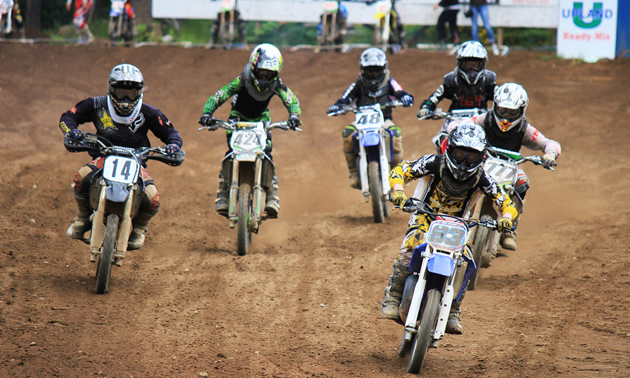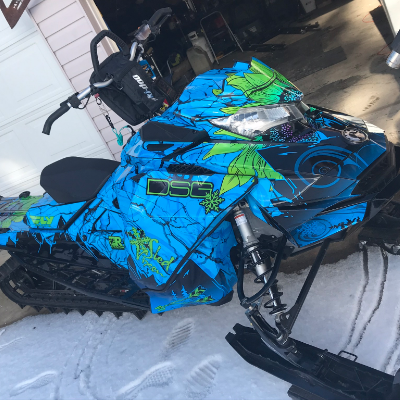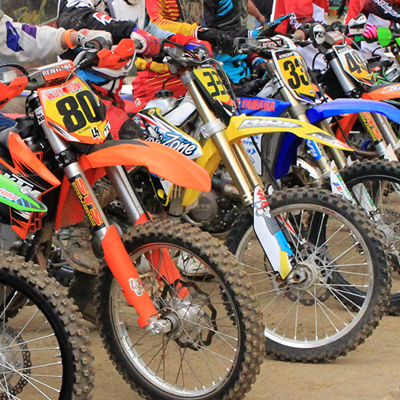It also gives spectators and competitors time to ruminate on the series, identify highlights and outstanding performances, and consider ways to make the series even better.
There's ultimately only one vital statistic in regards to a racing program, and that's rider entries. This year, rider entries are up in the Island Championship Series by just over 10 per cent, which is huge when the numbers have been declining all over the country for the past several years. Now, the task is to identify why this has happened, and then to do more of it.
Changing it up
The racing format was changed a bit from last year and I think it's better, but not perfect. Last year, the series was held at four tracks, and most of the rounds were doubleheaders with racing on Saturday and Sunday. This year, the series was held at three tracks and each round had a practice day on Saturday and racing on Sunday. This took place because the doubleheaders proved problematic for a few reasons.
From a racer and family perspective, it made for long, tiring weekends. Most families would leave home sometime on Friday and get home utterly exhausted sometime Sunday night. Doing this week after week meant there was no time for life while the racing season was on. Having a more relaxed, optional practice day on Saturday means families can decide how much of their weekend they want to devote to racing. On top of this, if a bike broke on Saturday it often meant missing the Sunday round and losing all those points.
Another drawback with the doubleheaders was that the racing season seemed to be over as soon as it began. Running eight races in four weekends meant that if you sprained an ankle, and had to miss a couple weeks of racing, you could effectively miss half of the series for a minor injury. Spreading the series out has helped alleviate this situation to some extent.
The drawback of spreading the series out is that families who have to travel significant distances to race have to incur this expense more often. Ideally, I think the best solution is a combination of solo events and doubleheaders—but that didn't happen this year because of the other primary reason that caused the doubleheaders to be troublesome.
From a host track perspective, race days are expensive while practice days earn money. Race days require higher insurance rates, more paid positions at the track and more expensive grooming procedures. Virtually all the tracks lose money on a race day, so having a doubleheader is an expensive undertaking. Having a practice day allows the tracks to recoup a little of their cash. Having had so many doubleheaders last year, the tracks were anxious about their dwindling bank accounts and not so anxious to have doubleheaders this year. Hopefully, we can find some kind of compromise next season between the two formats.
Cutting down on costs
The other big change this year was that we had three tracks in the series instead of four. The Port McNeill track opted out of the series and decided to do things as an independent track this year. Speaking personally, this turned out to be both a good and bad thing.
I loved being at the Port McNeill track. The track itself is awesome, and the people are some of the most generous and kind-hearted hosts you'll ever encounter. It was always a great trip once you got to Port McNeill—the painful (and expensive) part was the exhausting drive up to the north end of the Island. Not having to make the long trek saved families a lot of time and money, and many families have expressed how relieved they are that they didn't have to make the voyage to compete there this season. Removing this venue from the series may be part of the reason why numbers are up this season.
All the tracks in the series are now relatively central and easy to get to for most of the riders. Unfortunately I don't think things have turned out so well for the Port McNeill track. Without being part of a series they've been unable to draw riders to the track and, to the best of my knowledge, their race program was effectively cancelled for the season.
Moving the championship to the fall session
Other changes this season include holding the last round of the championship at the start of the fall racing session. This was done partly because there was a shortage of race weekends that didn't conflict with other racing programs, and partly to allow riders a chance to recover physically and financially before the final round. It was also hoped that tying the last round of the championship series to the fall session might increase interest in the fall racing program, which has traditionally lacked enthusiasm and turnout.
This year, the fall program was shortened and measures were taken to decrease the cost of the series. Other ideas are still being floated around in regards to making the fall racing program more fun and attractive to racers. It's yet to be seen if these measures will result in higher rider involvement.
New racing programs
A new “try-before-you-buy” program was also instigated this year that allowed riders to race once before purchasing their Canadian Motosport Racing Corporation (CMRC) licence. This was taken advantage of by many new riders, several of whom came back and bought full licences.
Credit must also be given to the Westshore Motocross track in Victoria, which has done an admirable job of soliciting new riders into their private program, many of whom have also gone on to join the full CMRC/Vancouver Island Motocross Association (VIMX) Island Championship Series. I've been openly critical of the fact that Westshore has resisted integrating themselves with the other tracks and sanctioning bodies on the Island, and I stand by those words, but this is not to say that they aren't doing good things.
Aside from the fully sanctioned Island Championship Series, and the less strident Fall Inter-Club Series, at least two of the non-profit clubs and Westshore have also offered evening club races. These events allow seasoned racers to have a formal, groomed practice session and new riders to get their feet wet racing in a casual and inexpensive atmosphere.
Intermediates on the rise
There's certainly lots of racing occurring on the Island and, all in all, things are looking up for Island racing. It's always exciting to see new racers making their way out to the tracks and there have been many doing so this year.
One of the highlights, if not THE highlight, of this season was the size and quality of the intermediate class on the Island. Participation in the intermediate class was up by about 25 per cent this year, and the skill level of the riders seems to have improved dramatically across the board.
The intermediate class is where the talent pools. All intermediate riders have won at the junior level, and most of the top intermediates have dominated the junior class at some point. The fascinating thing about the intermediate class is that you get to see dominant juniors from different years racing each other; it's like an all-star junior race! The other great thing about a strong intermediate class is that this is where pros develop their skills.
Where have all the pros gone?
Ironically, perhaps the biggest shortcoming on the Island this year is the lack of pro riders racing the circuit. While rider numbers are generally increasing in all other classes, the pro class has completely disappeared. This is puzzling and warrants further investigation.
Top talent from the Island
Vancouver Island has produced some of the top pro riders in the country over the past decade, and one has to wonder if there is more talent in the pipeline.
Darcy Lange, from Courtenay, B.C., was a Canadian Pro Champion and contender for many years. He won several American Motorcyclists Association (AMA) Arenacross titles and finally landed a ride with the prestigious Pro Circuit AMA team in 2007. That year, Lange was well into arguably the best AMA season ever had by a Canadian—battling with teammate Ben Townley for the AMA Lites Supercross title when he was struck down with the illness that ended his career. Lange ended 2007 in second place in the series, but he beat the cancer; he won the battle that counted most of all!
Then, of course, there's Dusty Klatt from Campbell River, B.C., who is a four-time Canadian National Champion. Klatt has been at the forefront of Canadian motocross for about a decade now.
The burning question
So inquiring minds want to know, where is "the next one"? As I mentioned, there have been no pros riding on the island this summer. Coleton Mclean has recently become a dad, Nick Syrotuck went away fishing and, of course, Andrew Belin has been out for a couple years since he crushed his feet landing a jump in Campbell River. Some might be worried about where our fast guys are, but I'm really not. They're there, just hiding in the intermediate and lower classes.
The Island appears to be in an interstitial state between the Lange/Klatt/Belin era and a new era of talented young riders coming up the pipeline. Who, you might well ask, is going to replace these legendary riders?
Stay tuned for my assessment of the top up-and-coming prospects on the Island—the bugle is sounding to summon them, and they are coming!
Check back for Part 2 of the series.








Comments